quasar
Latest
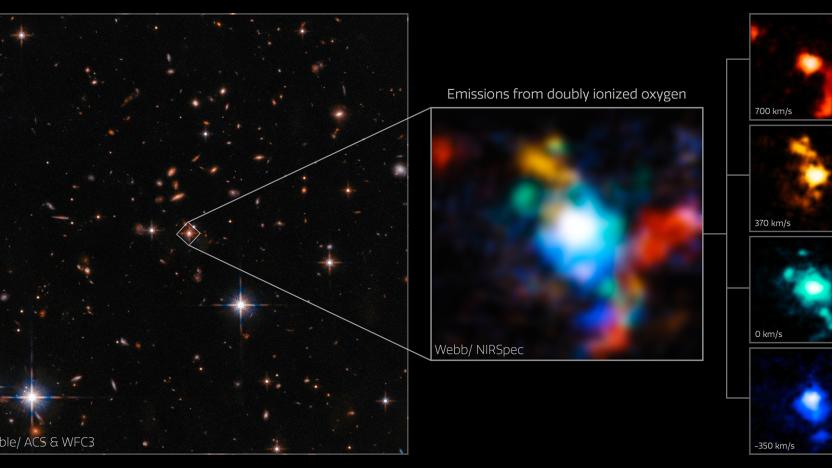
James Webb telescope captures 'knot' of galaxies in the early universe
A James Webb telescope image has unveiled a 'knot' of galaxies from 11.5 billion years ago.
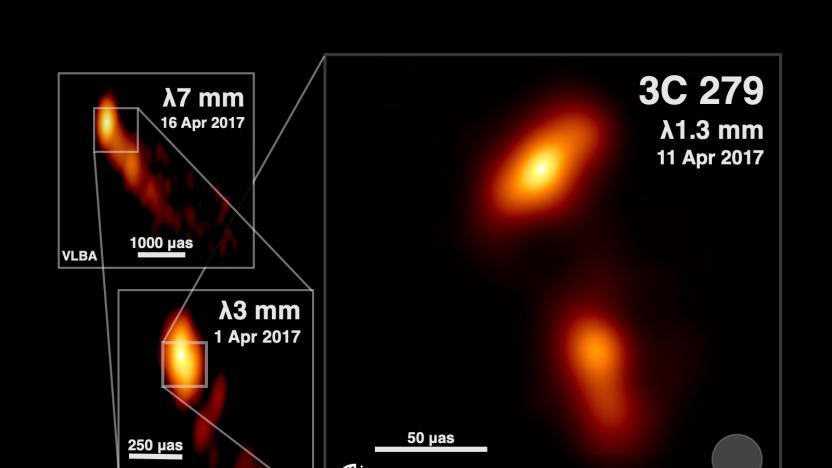
Scientists visualize a black hole plasma jet in unprecedented detail
Scientists visualize a black hole plasma jet in unprecedented detail
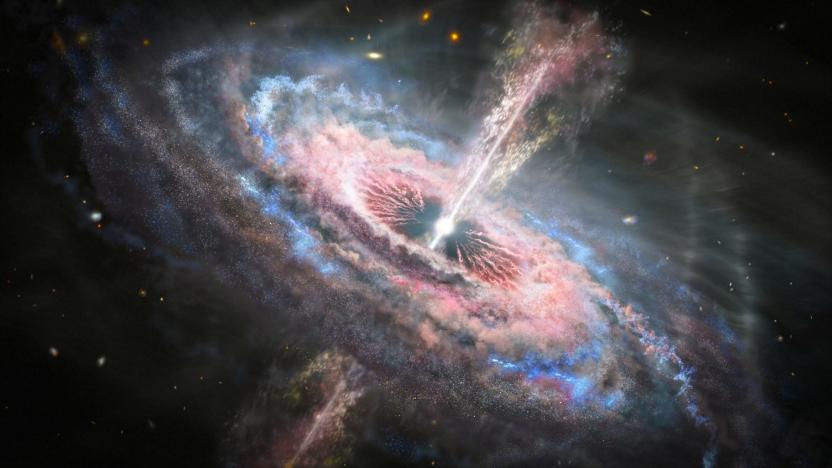
Hubble captures the immense 'tsunami' power of quasars
Powered by supermassive black holes that consume huge amounts of galactic material, quasars are some of the most energetic objects in the universe. How energetic? Some of them shine up to 1,000 times brighter than the galaxies that house them. Now, a team of astronomers has used the Hubble Space Telescope to examine several large quasars, and what they found was mind-boggling. Some quasars act like tsunamis, pushing 46-million-MPH winds that blast out hundreds of times the Sun's weight of material per year while creating ripples across entire galaxies.

The Quasar home EV charger can power your car and your house
Power typically only flows in one direction when it comes to charging electric vehicles at home: from the base station into the car. However the Quasar system from Wallbox can push power both ways, either into the vehicle or back into the base station and onto the local utility grid. And now it's coming to America.
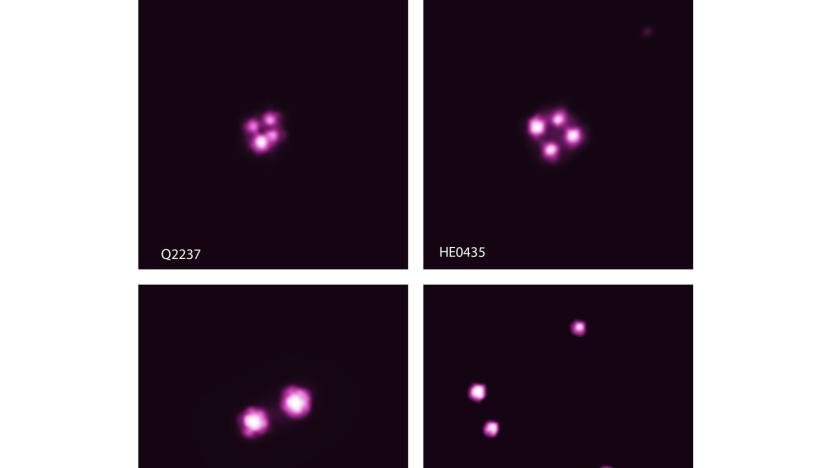
X-rays help astronomers detect spinning black holes
It can be tricky to measure the spin of a black hole, particularly when it's hard to see them, but astronomers have pulled off just such a feat. They've gauged the spins of five supermassive black holes through a combination of data from the Chandra X-ray Observatory and gravitational lensing, or the use of gravity from celestial bodies to magnify very distant objects.
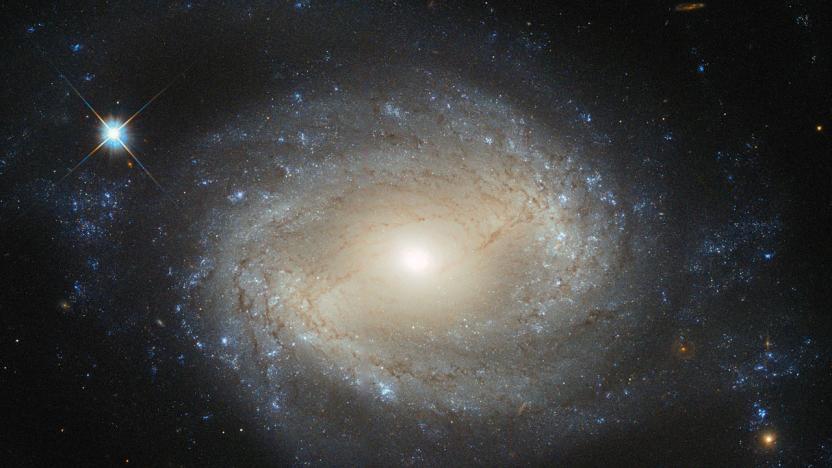
Supermassive black holes may control galaxy formation
Scientists have suspected for awhile that the supermassive black holes at the center of most galaxies affect the formation of stars within that galaxy. Now, in a study published this week in The Astrophysical Journal, scientists may have found the mechanism for how that happens. A team led by Shelley Wright, a physics professor at the University of California San Diego, found that the winds generated by these energetic stellar objects blow throughout a galaxy and affect the way stars form.
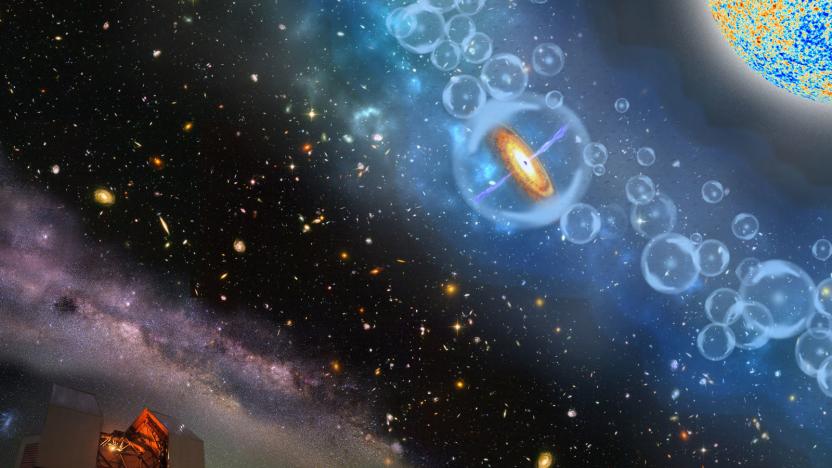
Farthest-ever supermassive black hole reveals the early universe
Quasars are supermassive black holes at the center of galaxies that actively consume gas and dust. As mass falls into the black hole, it forms an accretion disk around the black hole and jets of matter that spew from the black hole. These features make quasars some of the brightest objects in the universe. And now, scientists have discovered the most distant supermassive black hole ever observed, which is within a quasar. Findings will be published in the journal Nature.
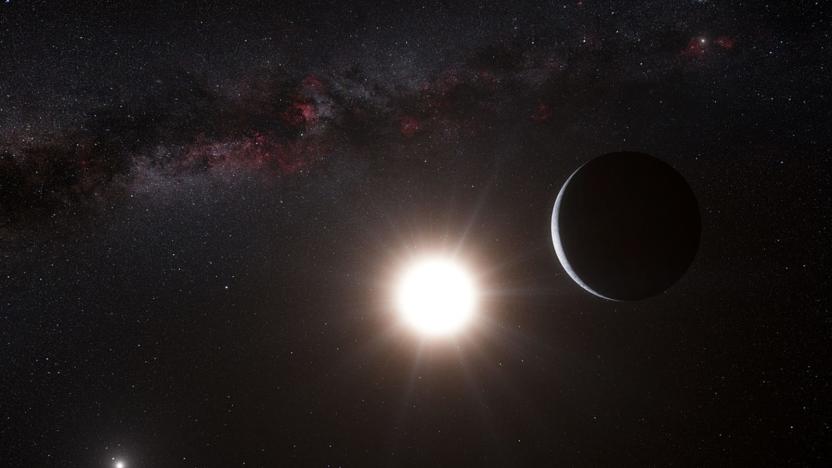
Astronomers scan for disappearing stars
Scientists are adept at spotting stars, even very old ones. But what about stars that disappear? A handful of researchers, led by Uppsala University's Beatriz Villarroel, aims to find out. They've been comparing sky surveys to see if any light sources (usually stars) have disappeared between these scans. Out of the 300,000 sources in the study, they've found one that appears to have vanished without a trace.

Tokyoflash turns hexagonal fan concept watch into $109 reality (video)
Remember that time you submitted a script to Babylon 5 and it was accepted for a show? Yeah, didn't happen to us either, but apparently Tokyoflash has a much more open mind with its fans. It just launched the Kisai Quasar, a hexagonal-themed watch that was originally submitted by Tokyoflash buff László Scheffer. The geometry is echoed in the watch face to create yet another signature Kisai design with a nerd-only time display. Thankfully there's also a simplified mode that shows, well, numbers. You can grab it in silver or black (with a blue, red, green or mirrored display) for the next two days at $109, after which it'll run $149 -- just watch where you point the thing.

Newly discovered quasar cluster may be the largest structure in the universe
The Large Quasar Group isn't just a psychedelic cover band, but also an enormous cluster of quasars forming what an international team of astronomers led by University of Central Lancashire are calling "the largest known structure in the universe." When the name isn't being reappropriated for British laser tag, its being used to describe the distant (and therefore aged) nuclei of galaxies which often group together in clusters; this cluster just happens to also be the largest such structure ever discovered, making it the de facto largest in the known universe. Resultantly, it also may challenge an Einstein-derived supposition that, "the universe, when viewed at a sufficiently large scale, looks the same no matter where you are observing it from." Of course, you'd have to be incredibly huge to determine conclusively whether or not that's the case, but that Einstein guy was pretty good at making educated guesses. [Photo credit: M. Kornmesser, ESO]

Australia Square Kilometre Array Pathfinder goes live as the world's quickest radio telescope
Australia's Shire of Murchison is quickly becoming a hotbed for radio telescopes. As of of Friday, the territory is operating the world's fastest radio telescope in the form of the Australia Square Kilometre Array Pathfinder (ASKAP). The 36-antenna grid's eventual use of six phased array feeds, each with 188 receivers, will let it scan a field of view 150 times larger than the moon's visible area while processing that information much faster than a typical single-pixel radio telescope feed -- CSIRO estimates that an image of the Centaurus A galaxy that would take 10,000 hours to process with rivals should take five minutes with ASKAP. Ultimately, the array should grow to 60 antennas as part of the Square Kilometer Array, which includes South Africa in its hunt for pulsars, quasars and other unique parts of the universe. Just don't get your hopes up for booking alien listening sessions anytime soon. Commissioning started virtually as soon as the ribbon was cut, and scientists have already scheduled their usage slots for the next five years. We're sure we'll get over any frustration when we see the first ASKAP results published within the next year.

Radio astronomy pioneer Sir Bernard Lovell dies at 98
Astronomy just lost one of its vanguards, as Sir Bernard Lovell has died at 98. The UK-born scientist was best known as a cornerstone of radio telescope development. While he wasn't the first to leap into the field, he established the University of Manchester's Jodrell Bank Observatory to study cosmic rays in 1945 and organized the construction of what would ultimately be called the Lovell Telescope -- a radio telescope so large and useful that it's still the third-largest steerable example in the world, 55 years after it was first put into action. His work helped track some of the earliest spacecraft and was instrumental in confirming the first discovered pulsars and quasars. On top of his most conspicuous achievements, Sir Lovell played an important role in developing airborne radar during World War II and was lauded for having scientific curiosity long after he hung up his Jodrell director's hat in 1980. Science will be poorer without him. [Image credit: NASA; thanks, Darren]

NASA's NuSTAR probe snaps first X-ray image of feeding black hole
It was Bret Easton Ellis who coined the phrase, "The better you look, the more you see," and it appears the folks down at NASA's Jet Propulsion Lab agree. In what's considered a "first," the agency's latest space-scouring probe, the Nuclear Spectroscopic Telescope Array, has turned on its X-ray vision to capture focused images of a black hole, dubbed Cygnus X-1, feeding on a nearby giant star. By tuning into these high-energy frequencies, scientists are getting a peek into a previously unseen side of the heavens at 100 times the sensitivity and 10 times the resolution of any preceding tech. The space agency plans to use the observatory's powerful sight to suss out other known areas of mass X-ray activity like 3C273, an active quasar located two billion light years away and even explore G21.5-0.9, the fallout from a supernova within the Milky Way galaxy. NuSTAR's first tour of galactic duty will span two year's time, during which it'll attempt to record imagery from "the most energetic objects in the universe, " as well as track the existence of black holes throughout the cosmos. Impressed? Yeah, us too.

Quasar gives the iPad untabbed windows for ten dollars and a jailbreak (video)
The iPad was made to do many things, but windowed multitasking wasn't one of them. Leave it to the Cydia Store to provide a new app that delivers individual, rotatable, scalable, untabbed windows. Quasar, from developer Pedro Franceschi, let's you do just that across multiple apps -- without relying on home button double-taps or tricky multi-finger gestures. The video below makes it seem pretty magical, so take a look and let us know what you think.

Windowed apps on jailbroken iPad
If you have a jailbroken iPad, then you'll want to check out Quasar. As noted by Big Boss, The tweak lets you run each app in a separate window on your iPad. Each window can be resized, moved and closed just like a window on a full desktop OS. You can check out Quasar in the demo video below and then download the US$10 iPad app from the Cydia store. [Via The Verge]

Giant body of water found in space, black hole claims it was just hydrating
Is that an intergalactic wave pool, or just a hungry, hungry quasar? Turns out it's a bit of both -- well, not the wave pool bit, but it's watery. A NASA-funded peep into the farthest reaches of the cosmos has uncovered this "feeding black hole" 12 billion light years away. APM 08279+5255, as this compacted mass of inescapable doom is affectionately known, has been gorging on water vapor and spewing out energy. How much H2O exactly? It's only the "largest and farthest reservoir of water ever detected in the universe," and it weighs in at 140 trillion times the amount in our oceans. Located via the cooperation of two teams of astronomers and their star-gazing equipment -- the Z-Space instrument at California Institute of Technology's Submillimeter Observatory in Hawaii and the Plateau de Bure Interferometer in the French Alps -- this aqueous discovery proves the wet stuff is more universally omnipresent than we once thought. Also, surfing aliens, right?








